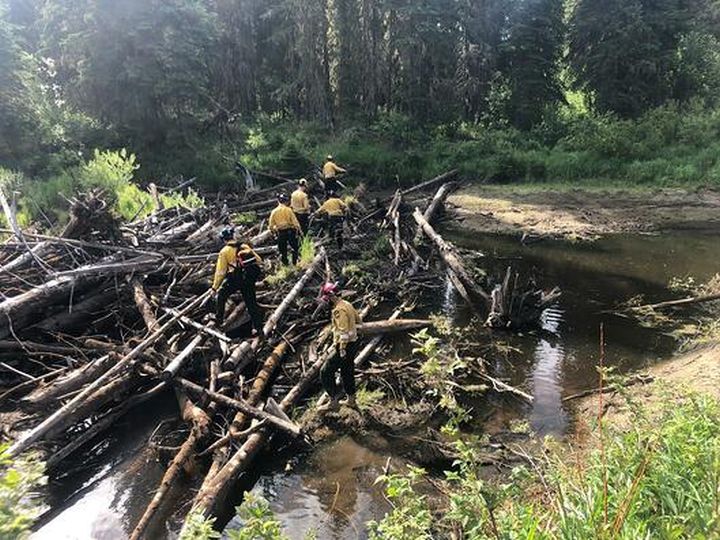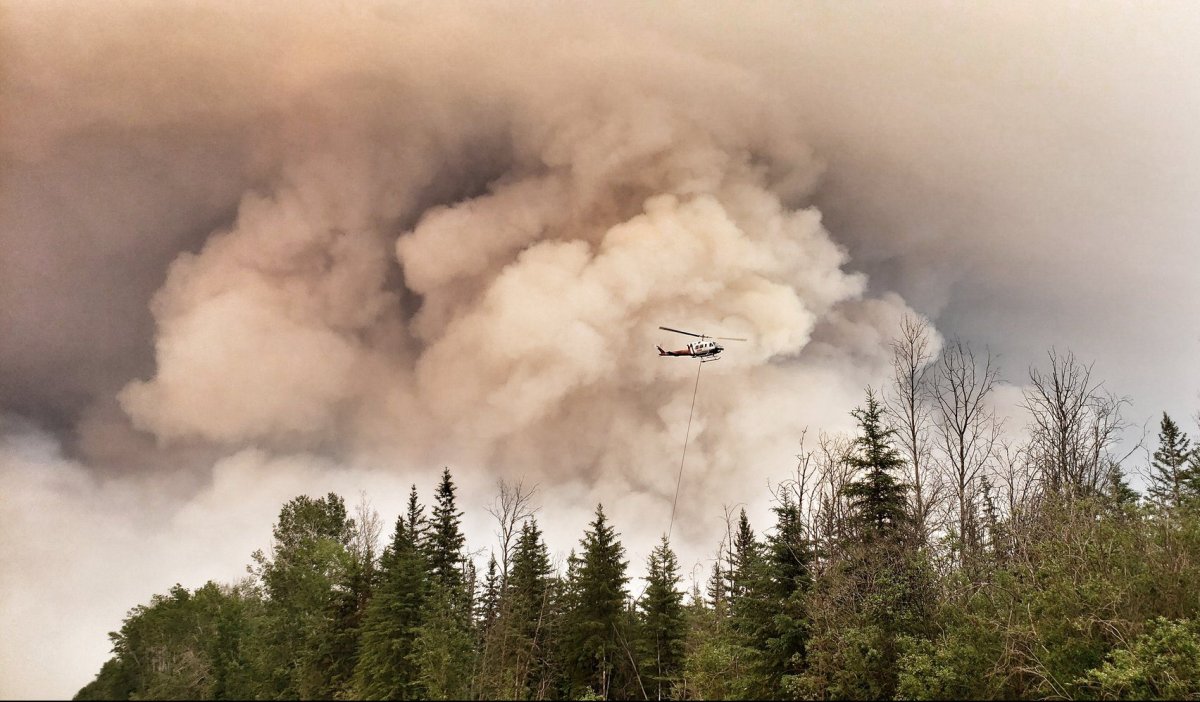With Albertans staying at home for much of the spring, laying low to mitigate the risk of spreading COVID-19, the province’s wildfire season has also been a lot less active than in previous years.

By the middle of June last year, thousands of acres of Alberta’s forests were ablaze, specifically within the Chuckegg Creek wildfire, which firefighters battled for weeks before gaining control of the flames.
According to Alberta Wildfire information officer Travis Fairweather, so far this year, 300 fires have burned just 450 hectares of land in the province.

By this time last year, double the number of blazes were reported, with more than 650,000 hectares having caught fire. In total, nearly 900,000 hectares burned during the 2019 wildfire season, marking the largest area to burn in 38 years.
According to Mike Flannigan, professor of wildland fire at the University of Alberta, the biggest reason this year’s fire season hasn’t taken off is because “the fuel is simply too wet.”
“The weather alone would explain the reduction,” Flannigan said.
“On top of that, there’s been a number of restrictions, as well as stay-at-home orders because of the pandemic, so there’s been fewer people working in the woods, fewer people recreating in the woods.
“So this has had an impact in reducing the number of human-caused fires. So take that in combination — it’s been one of our quietest years for years.”
But how much of the slow season is due to the pandemic and how much is due to the weather?
Flannigan said it’s almost impossible to determine, as both factors are playing a role in the reduction.
Will more activity lead to higher risk?
As part of the government’s pandemic restrictions, a fire ban was also put in place across the province.
Now that that’s lifted, along with restrictions on campgrounds, trails, off-road vehicle use and other outdoor activities, could Albertans heading back into the forested areas lead to a late surge in the wildfire season?
According to Flannigan, it’s not likely.
“There’s this window after the snow melts and before things green up — it’s about three weeks — and during that period, you have dry grass, the needles and leaves, and that’s very conducive for fires to start,” Flannigan said.
“It’s a completely different situation now because things have greened up — the rain, it’s really green. So we won’t see it as things open up.”
Fairweather echoed that sentiment, reiterating that even though the majority of spring fires are caused by humans, the weather is the biggest factor to consider.
“Having less people out and using the forested areas, that that would lessen that somewhat, but at the end of the day, it’s going to be the weather that would be the main contributing factor,” Fairweather said.
That said, Fairweather said officials are still keeping a close eye on conditions and people’s actions as they head back into the forested areas.
“Every wildfire season is different and you never know… your models and your predictions can show it might be a hazardous fire season and then you get a quiet fire season and vice versa,” he said.
“So, you never want to commit to one prediction or another. You want to be prepared for all possible outcomes.”
Looking forward to the summer
While Alberta has avoided much destruction from wildfires so far this year, it doesn’t mean there isn’t still a very real risk.
“(It) doesn’t mean we can’t have a busy fire summer,” he said.
“July is fair game, especially in the north with lightning-caused fires, which are the primary agents in the summer.”
However, at this point, Flannigan said the biggest risk for new blazes is no longer humans but rather thunder and lightning storms.
“I don’t see that human-caused fires are going to be a major role unless we have a prolonged drought for the rest of the summer,” he said, adding that Alberta would only need about a week of hot, dry weather before a “raging inferno” could spark.

If the remainder of the summer does see fire activity increase, Fairweather said the province is prepared — even though it can’t bring in firefighters from other provinces or countries like in previous years.
A large part of why the fire bans were put in place in the spring was to alleviate that stress if the virus were to spread through one of Alberta’s fire camps, taking a number of firefighters out of the mix.
“Now that we have seen the leaves in the grass start to green up and that wildlife hazards lessen throughout the province, there is less concern for that sort of situation happening,” Fairweather said.
“And then as well, we were able to hire an additional 200 firefighters within the province of Alberta and add them to our firefighting force as well.
“That can sort of make up for that inability to import resources from other provinces as we have in the past.”
Because fire seasons tend to balance each other out — with some being more active than others — officials don’t see the slow 2020 season having much of an impact on any future fire years.







Comments